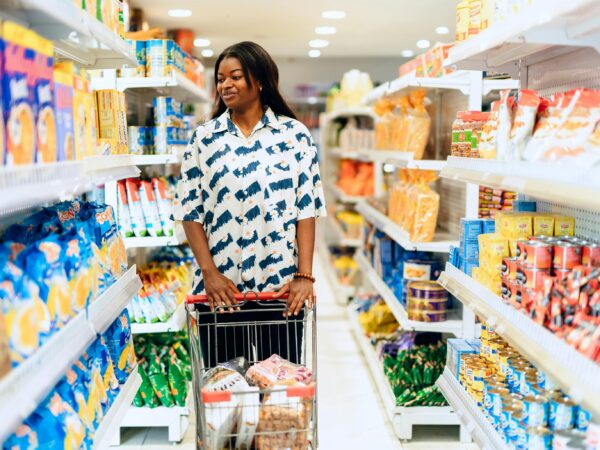Creating an Engaging Retail Customer Experience
Learn how to create an engaging retail customer experience for your food or beverage business from trusted experts at Sam Adams.

All of us have walked into one of those stores that just feels right – it has the right atmosphere, the right layout, the right music, the right smell. The whole ambience signals that you’ve come to the right place. Likewise, the attractive design, easy user interface, and smart organization of a website tell you as a customer that the shop has what you need.
You want to create this kind of engaging retail experience for your customers. You want people to come to your store or site and know immediately that you’re the right brand for them. So how do you do it?
Identify Your Customer
The first step in merchandising your brand is getting to know your customer. Ask yourself some basic questions:
What is your target demographic?
What about your product or service appeals to them?
What types of experiences will they respond to?
For example, say you’re opening a frozen yogurt shop near a university. Your target demographic will probably be university students – they’ll be attracted to a specific type of design, contemporary music, and trendy topping choices (not to mention plenty of outlets to charge their devices!). On the flip side, imagine you’re opening a frozen yogurt shop near an established neighborhood of baby boomers. They probably won’t like loud contemporary music and won’t have any interest in whether you offer kombucha. The first step in creating an engaging experience for your customer is figuring out who your customer is and what appeals to them.
You can learn more about defining your target customer and refining your brand to attract them here.
Engage the Senses
Once you’ve nailed down your target customer, you can start putting together concrete elements of your retail experience that will draw them in. It can be helpful to think about it in terms of the five senses – engage your customers through sight, sound, touch, smell, and taste.
1. Sight
Visual response is arguably the most important aspect of a retail customer experience. Consider what the space looks like and what you are trying to convey.
Start with the basics. Is your store clean and well-organized? Does the lighting make sense for your demographic? Do your shelving, cabinets, and other fixtures fit within your aesthetic?
Look at how your merchandise is displayed. Again, consider your demographic. Will your target customer prefer an artsy arrangement or a simple, easy-to-use layout for quick access? For example, a clothing store for millennials may choose to organize by outfit or style rather than by type of clothing. A store that focuses on simple basics, on the other hand, may organize all the pants in one place and shirts in another.
One way to make sure that the visuals work is by using the PSA approach. PSA means “Place, Step Back, Analyze:”
Here’s how to put PSA in action in your store:
- Have an idea
- Place your products so they look pleasing to the eye
- Step back and look at the whole picture
Put yourself in the customer’s shoes. Would this visual layout make you feel at home in this space? Does it send the right message for your brand? If not, make some changes until it feels right!
2. Touch
The next thing to consider is the feel of your products. For example, if you’re selling a $100 sweatshirt, can your customers perceive the value from the feel of the material? Your want the feel of each of your products to convey their quality.
Research shows that if a customer picks up a product and carries it around the store, they’ll be more likely to buy it because they are in the mindset that they already own it. Make your products accessible so that people can physically touch them and move them around. Train your salespeople to encourage customers to try out products, try on clothes or try samples of food – this may be all it takes to get them hooked.
3. Sound
The next sensory factor to consider is sound. What do customers hear when they enter your space? Is it pleasant and soothing, or jarring and off-putting?
Many retailers use music to set the mood for their customers. High energy music would be appropriate in a teen clothing store, while mellow instrumentals would be appropriate in a spa.
Both Pandora for Business and Spotify provide business music stations for little cost. Since it’s important to check out music licensing requirements for use in retail space, these two stations have pre-checked and cleared all licensing issues, so they’re easy, low-cost options for business streaming.
4. Smell
Scent is next on the sensory list. It will apply more often than you might think. Obviously a coffee shop or bakery would want to entice customers with the aroma of their products, but smell is an extremely powerful sense and any retail experience can benefit from a smart choice in this area. A fresh, light scent in a clothing store can summon memories of fresh laundry and soothing aromatics in a spa enhance the sense of relaxation.
Aroma and fragrance point to the nature of your products as customers walk in the store, so make sure you’re hitting the right scent notes. By the same token, be very careful that no unpleasant smells sneak into your space. A backed-up sewer or overflowing garbage can create quite a stink and it only takes one unpleasant experience to drive a customer away forever.
5. Taste
Taste is somewhat narrower; it will generally apply only to businesses that sell food and beverages. Just like getting customers to pick up and feel your products encourages a sale, allowing them to taste products can be just what it takes to lead them to a purchase. Sam Adams knows that tasting their products will make a sale, so they provide daily tasting of their unique brews. You can also turn tastings into special events, which have the benefit of giving your brand both exposure and prestige.
The Bottom Line
Knowing how to create an engaging retail experience for your customers relies on two main points. The first is knowing who your customers are so you can provide what they want. The second is incorporating the five senses to create an immersive experience which will leave them wanting more.





